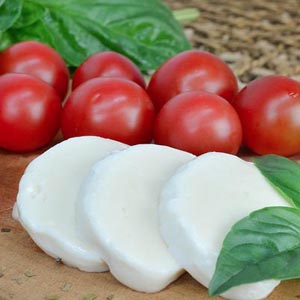The rule of biological and microbial safety in Hyssopus officinalis extract for influencing mozzarella cheese functionality

Accepted: June 3, 2022
All claims expressed in this article are solely those of the authors and do not necessarily represent those of their affiliated organizations, or those of the publisher, the editors and the reviewers. Any product that may be evaluated in this article or claim that may be made by its manufacturer is not guaranteed or endorsed by the publisher.
Authors
Mozzarella was identified as one of the most extensively consumed dairy products. The aim of this study was to investigate the effect of Hyssopus officinalis extract on microbial properties, antioxidant activity, and mozzarella storage. Ultrasound was applied to gain extract and tests, such as total phenolics, antioxidant attributes, and microbial investigation were accomplished. Physicochemical features, peroxide, sensory evaluation and microbial population were assessed on mozzarella including 0, 1.13 and 1.40 μg/ml Hyssopusofficinalis extract during 45 days. The highest phenolic content was observed in rosmarinic acid (60.33 ± 2.31 mg/g) and Listeria monocytogenes was recognized as the most resistant microorganism in Hyssopus officinalis. The physicochemical results were found to be standard and the lowest peroxide was detected in the sample with the highest extract amount (1.40 μg/ml) on the 45th day. The microbial evaluation showed that mentioned extract was effective to minimize survival of Escherichia coli and Listeria monocytogenes during storage. The reduction in contamination hazard of Escherichia coli almost 1 log CFU/mL was detected in treatment samples during storage. The Hyssopus officinalis extract was spotted as the most appropriate agent to improve functional and sensory properties of mozzarella.
How to Cite

This work is licensed under a Creative Commons Attribution-NonCommercial 4.0 International License.
PAGEPress has chosen to apply the Creative Commons Attribution NonCommercial 4.0 International License (CC BY-NC 4.0) to all manuscripts to be published.

 https://doi.org/10.4081/jbr.2022.10272
https://doi.org/10.4081/jbr.2022.10272



